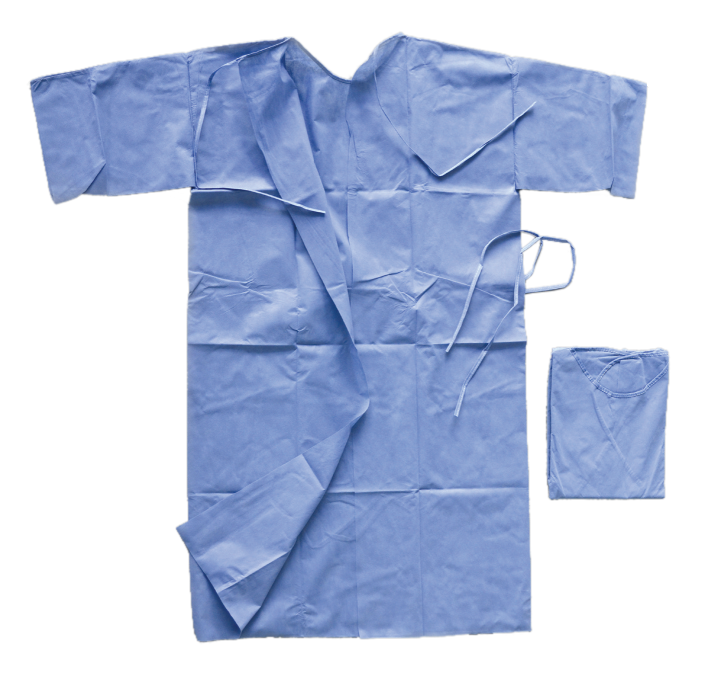Disposable Isolation Gown often referred to as surgical gowns, isolation gowns or procedure gowns, are a critical piece of personal protective equipment for personnel working in healthcare settings and an essential element of any infection control protocol. Gowns protect the wearer against infection or illness spread through contact with potentially infectious liquid or solid materials and help prevent the wearer from transferring microorganisms to patients.
Disposable Isolation Gown
In 2004, the FDA recognized the consensus standard American National Standards Institute/Association of the Advancement of Medical Instrumentation (ANSI/AAMI) PB70:2003, “Liquid barrier performance and classification of protective apparel and drapes intended for use in health care
facilities.”

The standard classifies the barrier protection levels of gowns and other protective apparel intended for use in healthcare facilities according to 4 levels. Disposable Isolation Gown, Because product names are not standardized, it is important for the wearer to select their gown by checking individual gown labels for the intended use and according to the desired level of protection based on the following risk levels:
- Level 1: Minimal risk, to be used, for example, during basic care, standard isolation, cover gown for visitors, or in a standard medical unit.
- Level 2: Low risk, to be used, for example, during the blood draw, suturing, in the Intensive Care Unit (ICU), or a pathology lab.
- Level 3: Moderate risk, to be used, for example, during the arterial blood draw, inserting an intravenous (IV) line, in the Emergency Room, or for trauma cases.
- Level 4: High risk, to be used, for example, Disposable Isolation Gown during long, fluid-intense procedures, surgery, when non-airborne pathogen resistance is needed or infectious diseases are suspected.
Surgical Gowns
In the U.S. surgical gowns are regulated by the FDA as Class II medical devices that require a 510(k) premarket notification. In Canada, all medical gowns (both surgical and surgical isolation) are classified as Class I medical devices and subject to medical devices regulations.
A surgical gown is a personal protective garment intended to be worn by healthcare personnel during surgical procedures to protect both the patient and healthcare personnel from the transfer of microorganisms, body fluids, and particulate matter. All Disposable Isolation Gowns must be labeled as such and may be used for any risk level (levels 1-4).
The critical zones on a surgical gown are:
- Front of the body, from top of shoulders to knees.
- Arms, from the wrist cuff to above the elbow.
Surgical Isolation Gowns
Surgical isolation gowns are intended for situations where there is a moderate to high risk of contamination and a need for larger critical zones than surgical gowns. Like surgical gowns, surgical isolation gowns are regulated by the FDA as Class II medical devices that require a 510(k) premarket notification. A surgical isolation gown should cover as much of the body as
appropriate for its intended use.
